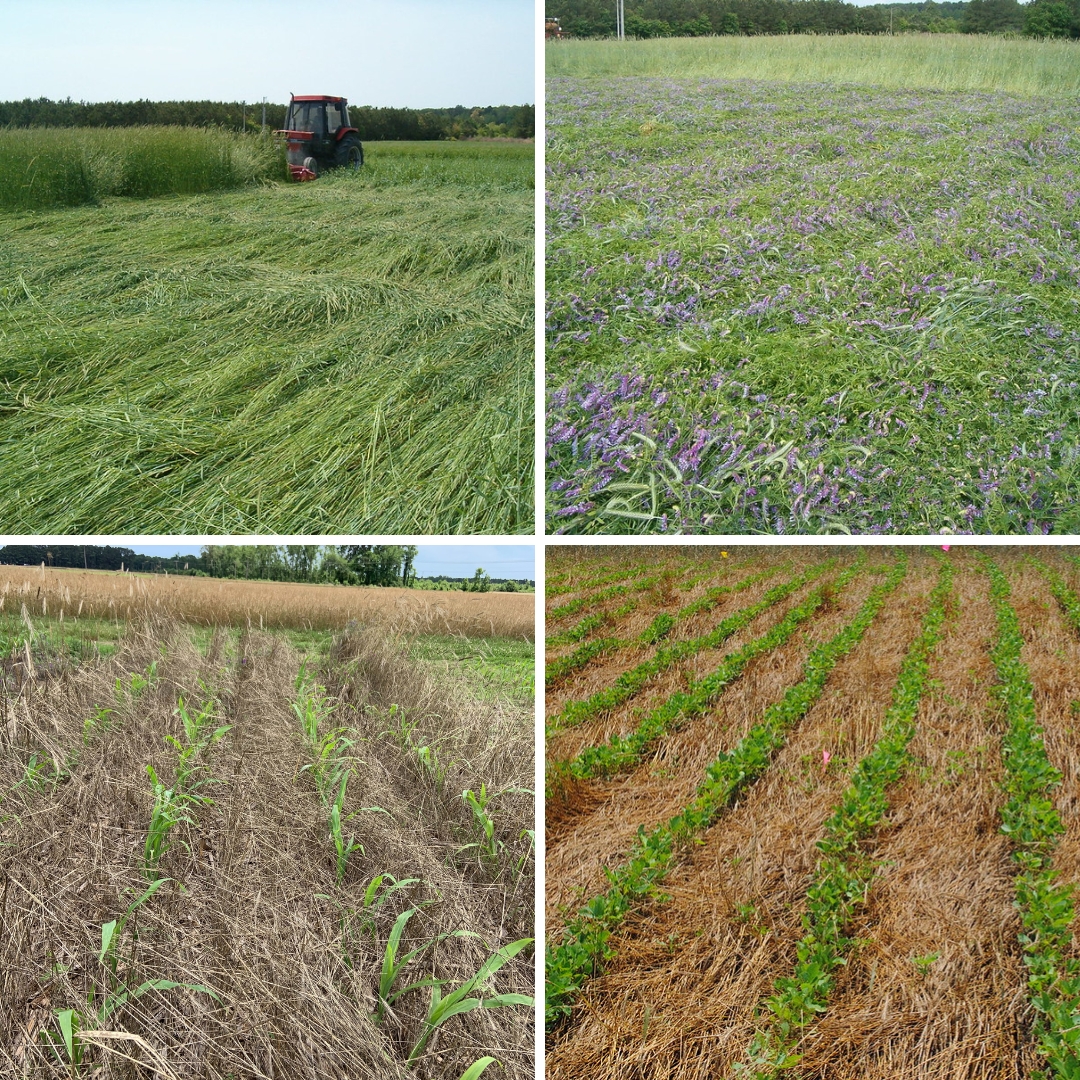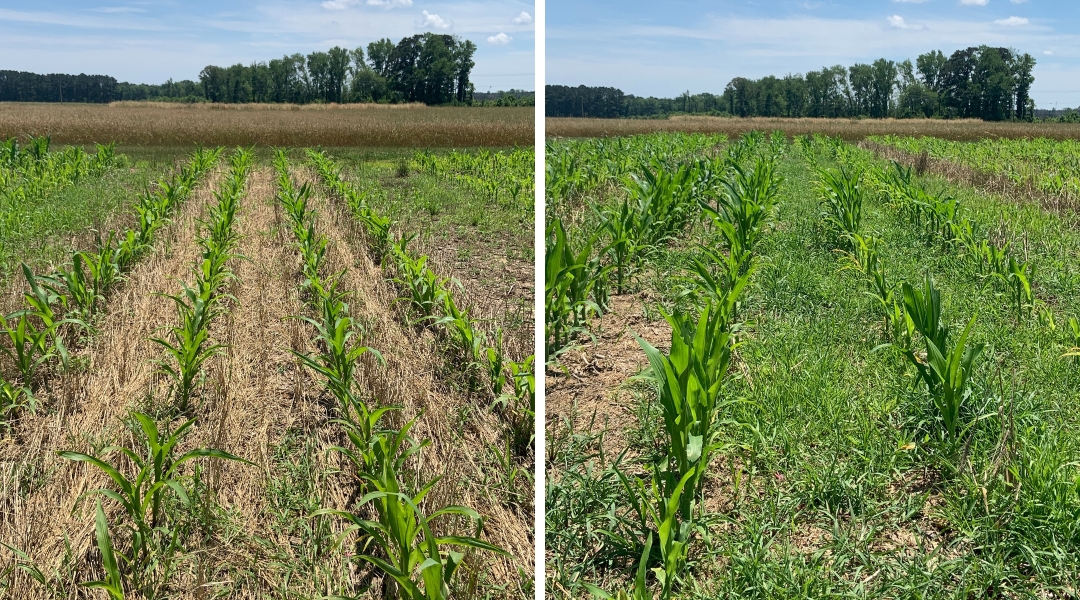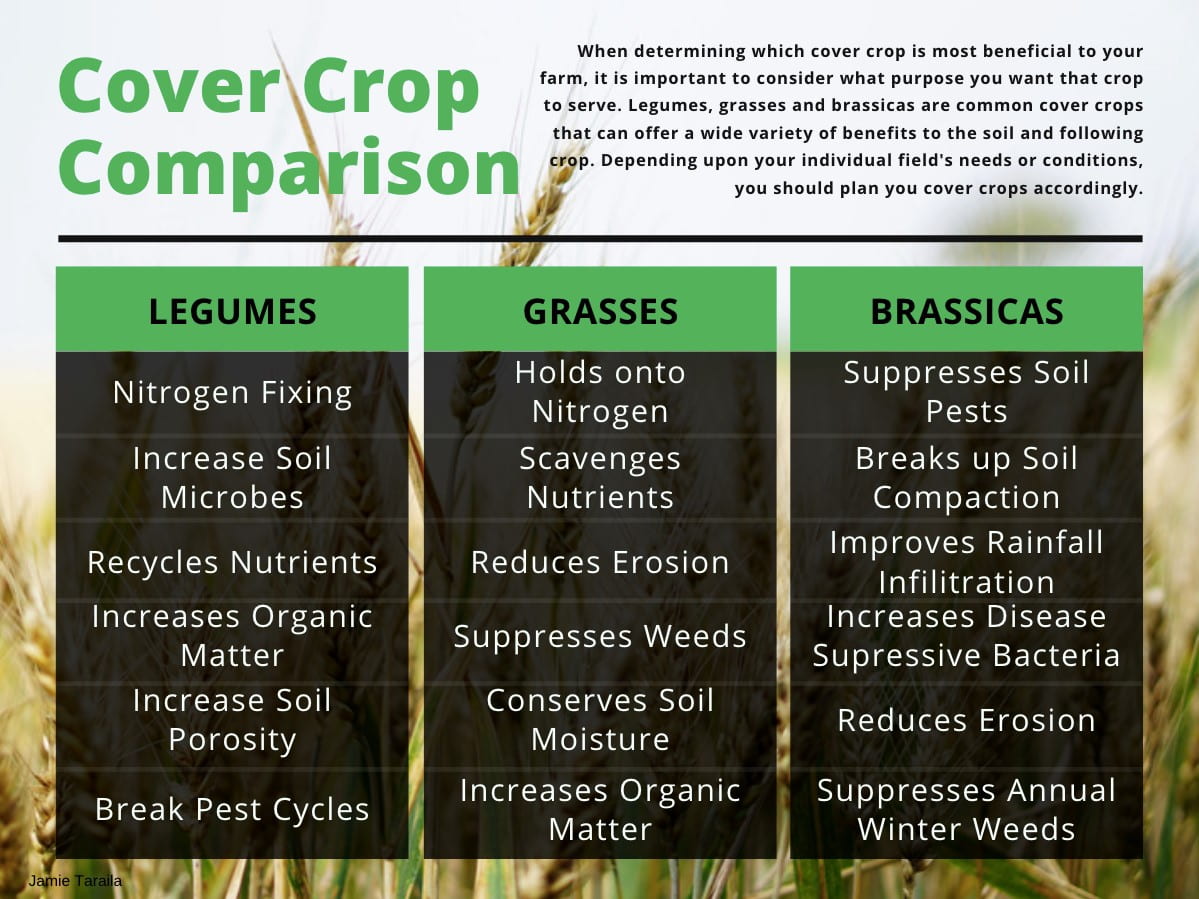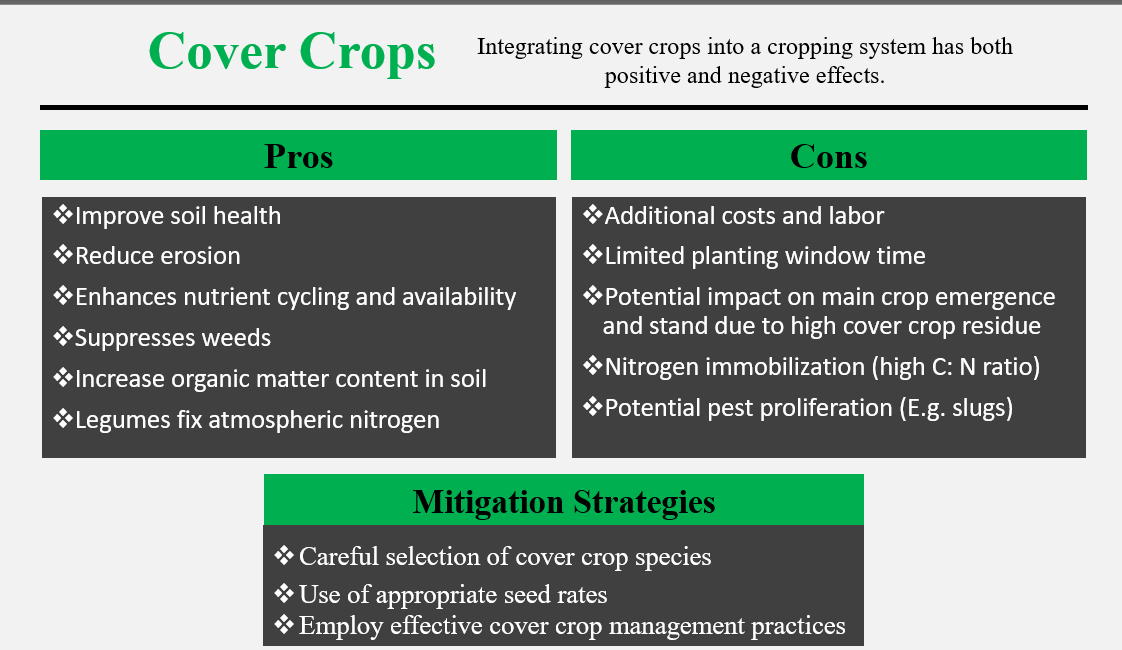
Fact Sheets And Publications
Managing Fall-Planted Cover Crops for Maximum Benefit
Sapana Pokhrel, Amy Shober, and Jarrod Miller
Introduction
Cover crops play an important role in protecting the soil and water when main crops like corn or soybean are not actively growing. The National Conservation Service promoted the use of cover crops during the Dust Bowl crisis of the 1930s, to protect soils from erosion but cover crops declined in practice sometime around World War II when synthetic fertilizers became commonplace. Winter wheat was considered a cover crop before the concept of cover crops enjoyed a renaissance in the US during the late 1990s (Groff, 2015). Today, farmers in the Mid-Atlantic region lead the nation in the use of cover crops (Figure 1).


Cover crops provide benefits to the soil beyond reducing erosion. For example:
- Cover crops can increase soil organic matter content, improve water infiltration, suppress weeds, and enhance nutrient cycling, particularly for nitrogen (N) and phosphorus (P).
- Achievement of these cover crop benefits is dependent on a variety of factors, such as the planned spring cash crop, cover crop type or species, seeding rate, planting and termination timing, and local weather conditions.
Farmers should be prepared answer the following questions before planting cover crops to ensure that cover crop benefits are maximized:
- What is the available cover crop planting window?
- Which main/cash crop will be planted after the cover crop?
- What cover crop benefits are being prioritized?
- Are the desired cover crops compatible with the operation practices and realistic?
- What potential challenges could arise by including cover crops in the cropping system?
1. What is the available cover crop planting window?
The choice of cover crop species and planting dates should align with the harvest of the prior crop. When planting cover crops, careful consideration of soil temperature and moisture is essential to create favorable conditions for the establishment of the cover crop.
Following harvest, there is a variable time frame after corn or soybean for cover crop establishment. The planting window following corn can begin in late August (earlier with aerial seeding) and extend through early November. This long planting window provides growers with the flexibility to choose cover crops based on the desired cover crop benefits (e.g., N fixation by legumes, weed suppression, erosion or compaction control, N scavenging). For example, planting legumes (like clover or hairy vetch) that fix atmospheric N can enhance soil fertility by supplying additional N to the subsequent crop. Alternatively, cereal rye can be planted following corn for its biomass production and weed suppression capabilities. Early establishment of cover crops, particularly with cereal crops, ensures root development and sunlight capture before winter weather sets in. As such, cereal crops are popular cover crop choices in the Mid-Atlantic region due to their resilience and ease of establishment in the fall. In addition, the earlier planting that is possible following corn harvests allows for rapid establishment of ground cover to prevent soil erosion during the winter months.
In contrast, can be a narrower planting window for cover crops following soybean, which typically runs from mid-October to November. This narrow establishment period requires that cover crops be planted as soon as possible after soybean harvest and before weather conditions become unfavorable for cover crop germination and establishment. Choosing cold-tolerant, rapid germinating cover crop varieties is advisable for late-planted cover crops following soybeans. The success of late-planted cover crops can be enhanced by increasing soil-to seed contact, which contributes to quick germination, cold tolerance, and vigorous growth. When moisture becomes a limiting factor later in the fall season, irrigation could be an option. Growing Degree Days (GDDs) are commonly used as planting guidelines, but GDDs alone may not ensure favorable soil conditions. For example, November planted cover crops might face moisture challenges, which irrigation can alleviate. It is also crucial to recognize variation in GDD requirements among different cover crop species, especially when comparing the establishment of early October to late November planted cover crop. Both GDDs and soil conditions should be emphasized to ensure effective establishment and subsequent crop benefits. In cases where fall cover crops couldn’t be planted due to late soybean harvest, spring cover crops offer compensation, particularly for fields with vegetables and late May or June main crop plantings (Johnson, 2023). Late March or April is suitable for planting cover crops like oats, barley, mustards, annual ryegrass, and peas either individually or mixtures. These late planted cover crops provide soil health benefits, mustard families have biofumigation properties and control pests, legumes such as peas and clover in mixtures supply N to subsequent crops. Spring cover cropping presents another option to harness the benefits of cover cropping. Incorporating and seed drilling can increase seed contact to soil and moisture. Interseeding cover crops into a standing soybean crop in August or September can also increase the length of the cover crop planting window and allow more flexibility in choice of cover crop species.
2. Which main/cash crop will be planted after the cover crop?
The choice of cover crop species, planting dates, and termination should fit the timing of planting the main crop. Careful consideration of soil temperature is essential for the establishment of the main crop; this is especially important for no-till management.
To ensure the success of soybeans planted following a cover crop, it is crucial to make wise choices. Such as:
- Avoid planting legume cover crops like hairy vetch and crimson clover before soybean, as these cover crops could continue to grow after termination and compete with soybean for vital resources like nutrients, water, and sunlight.
- In addition, the N supplied by legume cover crops can potentially reduce soybean yield by interfering with nodulation and increasing vegetative growth.
- There is a higher likelihood that a legume cover crop could act as a host for harmful diseases and pests (e.g., soybean cyst nematodes, fungal diseases, aphids, stink bugs, etc.) that can negatively impact soybean growth and development.
Late termination of cover crops can lead to greater biomass accumulation, especially in the case of monoculture cereal rye and mixtures involving cereal rye and legumes like clover and hairy vetch. Increased biomass translates to higher N content, which benefits subsequent crops (Miller et. al, 2022). However, it is important to keep in mind that late terminated cover crops with high biomass can negatively impact corn germination and establishment. Excess residue functions as a mechanical barrier to seedling emergence and reduces soil temperature, which also can delay germination. An abundance of residue can also lead to the temporary immobilization of N, which means that there is less readily available N for corn during the early growth stages. In addition, the presence of dense residue during the cool and humid spring season can foster a conducive environment for the proliferation of slugs, which may be detrimental to the emerging corn seedlings. Based on results of a recent study conducted in southern Delaware, we recommend terminating cover crops before the end of April to avoid germination and emergence issues before planting corn (Miller and Shober, 2023).
3. What cover crop benefits are being prioritized?
When making decisions about cover crop selection, considering the desired primary benefit of cover crops is essential. Cover crops can be broadly classified into three types: legumes, grasses, and brassicas, with each type offering distinct benefits (e.g., improving soil health, reducing input costs, increasing crop yields, etc.) to the cropping system (Figure 3). Cover crops should be selected to align with specific objectives for the overall cropping system.
Seeking Nitrogen Enrichment?
Planting legumes or a legume mixture is recommended if the primary goal is to provide N to the subsequent crop. Legumes fix atmospheric N in symbiosis with root colonizing rhizobium bacteria, making this fixed N available to subsequent crops. Researchers found that legume cover crops, such as hairy vetch and Australian winter pea, exhibit the potential to contribute a substantial N supply (in excess of 100 lb. N per acre) when the legumes are allowed to grow until the flowering stage. Researchers at Virginia Tech found (based on results of a litter bag study conducted in Blacksburg, Virginia) that hairy vetch yielded more than 100 lb. of N per acre during corn growing season when cover crop biomass was 1.45 tons per acre (Pokhrel, 2023). Planting leguminous cover crops can reduce N inputs to the main crop, which is particularly advantageous for N-demanding crops such as corn. As an added bonus, the substantial spring biomass produced by hairy vetch or crimson clover can suppress spring weed germination and proliferation. However, it’s important to note that hairy vetch is known for its hard seed, which may face challenges in fall germination, particularly in dry conditions. Likewise, crimson clover can encounter difficulties in overwintering, especially in harsh climates, risking issues such as winterkill duo to freezing temperatures or insufficient establishment.
Addressing Compaction Concerns?
Brassica cover crops, like radish and mustard, can be selected to address soil compaction. These deep rooting crops penetrate compacted soil layers, thereby improving soil tilth to the benefit of subsequent cash crops. The decomposition of winter-killed radish not only promotes aeration but also enhances water infiltration. Moreover, decomposing brassica biomass also adds soil organic matter and root exudates that can enhance soil microbial activity.
Nevertheless, it’s important to acknowledge that outcomes can vary between seasons and different locations. When radish isn’t winter-killed, it may present challenges such as regrowth, potentially transforming into a weed that competes with the main crop. If it survives the winter, it’s crucial to terminate it before it begins to flower and produce seeds (VanGessel, 2020). Furthermore, during decomposition, radish can emit an unpleasant odor, which could become a concern if the farm is in close proximity to residential areas.
Combating weeds? Scavenging nitrogen?
Consider planting cover crops or mixtures containing species with robust biomass production if weed suppression is the main priority. Cereal rye is a popular choice due to its rapid growth, winter hardiness, and ability to form a dense cover. Researchers also indicated the presence of allelopathic compounds that inhibit weed germination and growth from cereal rye (Adhikari et al, 2018). Fields planted with cereal rye exhibited significantly lower weed population compared to fields without cover crops in a recent Virginia Tech study (Figure 2; Pokhrel, 2023). As an added bonus, cereal rye cover crops have been shown to develop deep root systems that can scavenge N that leached below the root zone of the previous crop and return it to the soil surface for use by the next crop.

4. Are the desired cover crops compatible with the operation and realistic?
When selecting cover crop consider the availability and compatibility with equipment, as well as the expenses associated with planting, managing, and terminating the cover crop.
Many farmers prefer a single cover crop because of variation in seed density, cost, and uniformity in planting termination process. In cases where farmers lack equipment, cost-effective solutions such as renting or sharing with neighbors can be a practical approach. Alternatively, aerial planting offers the advantages of seeding into standing crops, but it is often costlier than broadcasting or drilling methods. Additionally, the “planting green” practice, where corn or soybean is planted into an actively growing cover crop, can be facilitated through use of roller crimpers, allowing for the planting corn or soybean and termination of cover crops in a single pass. It is important to note that planting equipment may require some modifications to ensure effective seed placement when planting cash crops into heavy residue, whether dead or alive.

Looking at cover cropping from an economic standpoint can be intricate, as initial seed and seeding expenses might seem to outweigh the immediate benefits for subsequent cash crop. However, it is wise to consider cover cropping as a long-term investment, where initial seed and labor costs should result in overall economic benefits in future seasons (e.g., legume N). Moreover, the expenses associated with cover crop inputs can be reduced through participation in various conservation programs that offer incentives for cover crop adoption. Incentive programs, which are relatively abundant in the Mid-Atlantic region, can help alleviate some of the financial burden of including cover crops in the cropping system.
Conclusions
The benefits of planting cover crops extend beyond soil protection to include improvements in soil health, nutrient cycling, and weed suppression. By carefully selecting cover crops, implementing proper cover crop management, and using a long-term investment mindset, farmers can benefit from cover crops in both corn and soybean production systems.
References
Adhikari, L., Mohseni-Moghadam, M., & Missaoui, A. 2018. Allelopathic effects of cereal rye on weed suppression and forage yield in Alfalfa. American Journal of Plant Sciences, 9(4), 685-700.
Groff, S. 2015. The past, present, and future of the cover crop industry. Journal of Soil and Water Conservation, 70(6), 130A-133A.
Johnson G. 2023. Spring planted cover crops. University of Delaware Cooperative Extension, March 3, 2023.
Miller, J., Shober, A., & VanGessel, M. 2022. Cover crop biomass and termination consideration. Weekly Crop Update. University of Delaware Cooperative Extension, April 1, 2022.
Miller, J., & Shober, A. 2023. Cover crop burndown and corn stands. Weekly Crop Update. University of Delaware Cooperative Extension, April 14, 2023.
Myers, R., Weber, A., & Sami, T. 2019. Cover crop economics opportunities to improve your bottom line in row crops. Ag Innovation Series. SARE Outreach.
Pokhrel, S. 2023. Cover Cropping: A strategy to healthy soil and nitrogen management in corn [Doctoral dissertation, Virginia Tech]. Virginia Tech.
Taraila, J., & Miller J. 2019. Considering fall cover crops. Delaware Agronomy Blog. University of Delaware Cooperative Extension.
VanGessel, M. 2020. Terminating forage radish (Aka tillage radishes). University of Delaware Cooperative Extension.
UD Cooperative Extension
This institution is an equal opportunity provider.
In accordance with Federal law and U.S. Department of Agriculture policy, Cooperative Extension is prohibited from discriminating on the basis of race, color, national origin, sex, age, or disability.
